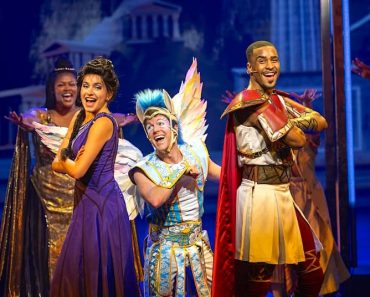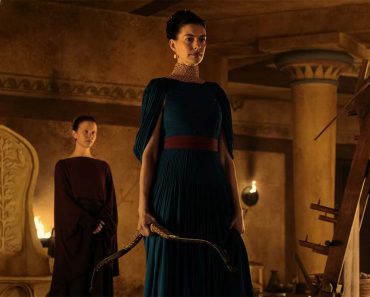
Greek mythology has exerted a deep and lasting influence on literature and art, shaping the foundations of storytelling, symbolic imagery, and cultural creativity for centuries. Its narratives continue to provide a shared language of heroes, gods, and universal themes that artists and writers draw upon to this day.
The transmission of myth extends far beyond Homer’s Iliad and Odyssey or Hesiod’s Theogony. These stories have been continuously reworked in drama, painting, sculpture, and modern visual arts, ensuring that ancient narratives remain alive, relevant, and open to reinterpretation. Each retelling—from classical tragedies to contemporary adaptations—keeps these myths embedded in cultural memory.
In literature, Greek mythology first spread through the oral epics of Homer and the didactic works of Hesiod. Yet its influence did not end with antiquity. Writers across eras have preserved, adapted, and reimagined these tales, allowing themes such as heroism, honor, fate, and human suffering to resonate in works from Virgil’s Aeneid to modern novels, poetry, and film. The archetypes they established—heroes, wanderers, tragic figures—remain central to storytelling today.
In art, the iconic statues of Greek gods created by Phidias, Praxiteles, and Polykleitos became the blueprint for sculptors for many generations, defining ideals of human form and proportion. Overall, Greek myths endure because they center on universal themes, offer rich symbolic depth, and remain remarkably adaptable, allowing each age to find new meaning within them.

The influence of Greek mythology on literature
Greek mythology served as a rich creative source as early as the 8th century BC in the works of Homer and Hesiod. Modern scholar Timothy Gantz highlighted the depth of these ancient materials, noting in his influential study Early Greek Myth: A Guide to Literary and Artistic Sources that myth should be understood as a living “tradition” expressed through both text and art. His extensive research demonstrates how ancient authors and artists shaped myth by selecting the specific episodes to portray and the manner in which they would be presented.
During the Renaissance, Greek mythology experienced a powerful revival. Russian scholar Natalya Davidko argues in her study Greek Myths in Elizabethan Literature and Art that “ancient Greek myths played a crucial role … in textual and visual art.” She explains that mythological references functioned not merely as decorative elements but as meaningful frameworks. Myth became a “cognitive base, a point of departure” for writers and artists, offering a structure through which they could explore politics, morality, religious ideas, and even concepts of monarchy.
Davidko also cites Enlightenment thinker Louis de Jaucourt (1704–1779), who described Greek myth as “the wellspring for painters, sculptors, and poets.” For Jaucourt, mythology represented “the patrimony of the arts … an inexhaustible source of unusual ideas, agreeable images, interesting subjects, allegories, and emblems.”
Jaucourt’s insight helps explain why myth has remained so influential in literature. Greek mythology offers an inexhaustible reservoir of narrative material along with rich metaphorical and allegorical layers, giving later writers the freedom to reinterpret ancient stories while infusing them with their own perspectives.
The influence of Greek mythology in the modern era
In the modern era, Greek mythology continues to surface in literature in innovative ways. Contemporary authors do not merely retell ancient narratives in updated settings; they use myth to probe themes such as identity, power, transformation, and gender. Swiss mythographer Claude Calame, trained in semiotics and ethnology, argues that mythic narratives are inherently performative, embodied in ritual and embedded within collective memory. In his view, myth functions not only as narrative but as symbolic action that shapes human identity.
Another influential figure is American mythologist Joseph Campbell. Campbell proposed the concept of the “monomyth” or “Hero’s Journey,” a universal structure underlying mythic storytelling across cultures. He maintained that “every myth is psychologically symbolic. Its narratives and images are to be read … not literally, but as metaphors.” This idea carries significant implications. For Campbell, myth endures because it offers archetypal patterns and psychologically resonant metaphors that illuminate human experience in any era.
The visual transmission
While Greek mythology in literature shaped the way people think, Greek art profoundly shaped the way we see and imagine beauty, harmony, and the human form. Its influence radiates across centuries, from classical sculpture to later revivals, and continues to frame visual culture today. Myth has been transmitted just as powerfully through imagery as through text—appearing in Ancient Greek pottery and sculpture, flourishing in Renaissance painting, reemerging in Neoclassicism, and persisting in modern media.
In the ancient world, myth and art were inseparable. Greek artists worked with an almost inexhaustible repertoire of gods, heroes, and fantastical creatures, translating these figures into sculpture, architecture, pottery, and public monuments. These visual representations did far more than embellish objects or buildings; they communicated religious beliefs, articulated moral values, and helped shape collective identity. Through images, myths became accessible to entire communities, reinforcing shared cultural narratives in a way that was immediate, vivid, and lasting.
With the rediscovery of classical art during the Renaissance, European artists eagerly turned to myth as a wellspring of beauty and symbolic meaning. The National Gallery in the United States aptly describes the Renaissance as a “rebirth of the ideals of classical culture,” a period in which mythological subjects took center stage in painting and sculpture. Artists such as Botticelli in The Birth of Venus and Raphael in Galatea invoked Greek myths not merely for their dramatic potential but for their layered symbolism related to love, transformation, and divine beauty.
Even today, mythological archetypes remain active in contemporary art: Zeus’s lightning bolts evoke power, Athena’s owl suggests wisdom, and Medusa’s head signals danger or otherness. These enduring visual cues show how Greek mythology continues to shape the modern imagination, offering symbols that are immediately recognizable across cultures and eras.
Aesthetics and form
Ancient Greek art is distinguished by its balance, proportion, and idealization. Sculptors such as Phidias, Praxiteles, and Polykleitos sought to capture perfect harmony in the human form, creating models of beauty that became enduring artistic standards. Their pursuit of ideal proportion shaped not only classical sculpture but also the foundations of Western aesthetics. The theories of harmony and bodily perfection adopted by later artists—whether in the Renaissance, Neoclassicism, or modern academic traditions—ultimately rest on this Greek legacy.
In pottery, the relationship between art and Greek mythology was equally vital. Countless vases, kraters, and amphorae depict scenes from Homer, Hesiod, and the great tragedians, transforming literary episodes into vivid visual narratives. These images helped transmit myth across the Greek world and beyond. At a time when literacy was far from universal, painted pottery served as a shared cultural memory, weaving mythic stories into everyday life and allowing people to “read” the legends through imagery.
Sculptures of mythological figures by Phidias, Myron, and Polykleitos later became essential to the development of modern art history, particularly through the work of German scholar Johann Joachim Winckelmann (1717–1768). Often regarded as the “father of art history,” Winckelmann believed that Greek art embodied an ideal of beauty and moral elevation. In his seminal History of Ancient Art (1764), he outlined the evolution of Greek aesthetics, linking artistic excellence to the political freedom of ancient Athens.
For Winckelmann, Greek art was far more than ornamentation; it was a philosophical expression of the ideal human spirit. As he famously asserted, “The only way for us to become great … is to imitate the Greeks,” insisting that Greek art “leads the artist through imitation to knowledge.”
Why the survival of the Greek myth matters
Greek mythology endures so powerfully in literature and art for a variety of reasons, and modern scholarship helps illuminate why these ancient stories remain culturally essential. At the most fundamental level, myth addresses universal human themes. Tales of love, jealousy, ambition, power, fate, and death speak to concerns that are as pressing today as they were in Ancient Greece. Joseph Campbell’s observation that myths are “psychologically symbolic” underscores their lasting force: these narratives encode emotional and existential experiences that continue to resonate across time.
Myth also survives because it is remarkably adaptable. As Natalya Davidko demonstrates, myths were never fixed texts but dynamic frameworks that Elizabethan poets and later writers reshaped to explore their own ideas about morality, religion, and political authority. Through this continuous reinterpretation, myth becomes a living tradition rather than a relic, capable of absorbing new perspectives while retaining its narrative core.
Louis de Jaucourt further emphasized its creative richness, describing Greek mythology as a vast “wellspring” from which artists could draw endlessly varied images, themes, and symbols—an observation that remains true in modern artistic practice. Equally important is the connection between myth, ritual, and identity.
Claude Calame, a Swiss mythographer and Hellenist whose approach is deeply interdisciplinary and combines semiotics, anthropology, narratology, and ethnopoetics, argues that myth is not merely told but performed—embodied in choral song, theater, and communal rituals that reinforce social memory and collective identity. Because myth functions within lived cultural practices, it becomes far more resilient, embedded in the everyday experiences of the community.
Modern scholarship has also played a crucial role in sustaining and revitalizing Greek mythology. Scholars such as Froma I. Zeitlin, an American Classics scholar, have offered groundbreaking interpretations that link tragedy, visual motifs, and ritual practice, while researchers such as Susan Deacy examine themes of gender, sexuality, and power in myth, revealing their relevance to contemporary ethical debates. These academic approaches enrich our understanding of the complexity of myth and ensure that Greek mythology continues not only to survive but to evolve as a vital part of cultural discourse.
Transmission and enduring influence of Greek mythology in the modern world
Greek mythology continues to be transmitted and exerts a profound influence in the modern world, extending beyond scholarly study into popular culture. Contemporary authors such as Madeline Miller (Circe, The Song of Achilles) reimagine myth for modern audiences, while fantasy writers and screenwriters frequently draw on Joseph Campbell’s concept of the Hero’s Journey to structure their narratives. These modern retellings demonstrate that ancient stories remain a fertile source of narrative inspiration, adaptable to contemporary themes and sensibilities.
Myth also appears in unexpected domains beyond the humanities. Even in science, Greek mythology provides symbolic names for experiments, discoveries, and phenomena, reflecting the enduring appeal of these stories as metaphors. A striking example is the naming of planets after the Romanized versions of Greek gods and Titans: Mercury (Hermes), Venus (Aphrodite), Mars (Ares), Jupiter (Zeus), Saturn (Cronus), Uranus (Ouranos), Neptune (Poseidon). These celestial names illustrate how myth continues to structure human understanding of the cosmos.
The persistence of Greek mythology in today’s complex world is no accident. Myths endure because they offer powerful metaphors, frameworks for ritual, markers of cultural and personal identity, and boundless creative potential. Whether in literature, visual art, science, or popular media, Greek myths remain a living tradition, continually reshaped yet profoundly resonant across generations.







